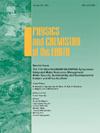河流生态健康状况和流域间调水潜力评估:赞比亚卢阿普拉河流域案例研究
IF 4.1
3区 地球科学
Q2 GEOSCIENCES, MULTIDISCIPLINARY
引用次数: 0
摘要
调水是满足用水紧张地区日益增长的用水需求的一种机制。然而,将水从一个地区转移到另一个地区往往会扰乱生态系统,包括渔业生物多样性和生长模式。因此,在考虑调水时,有关渔业生物多样性和状况的基线信息对于调水期间和调水后的可持续渔业管理至关重要。这项工作旨在调查卢阿普拉河流域(Luapula River Basin,LRB)当前的渔业状况(生物多样性、重量长度关系和状况因子),以探索未来跨流域调水对流域渔业的潜力和影响。2022/2023 年旱季和雨季期间,在卢阿普拉河流域选定地点对鱼类进行了采样。采用生物多样性指数、鱼类体重/长度关系和状态因子来描述鱼类的生物多样性、生长模式和健康状况,从而描述供体流域的水生状况。物种丰富度、香农多样性指数、辛普森指数和均匀度分别介于 0.8902 至 1.664、0.9167 至 2.1437、0.4416 至 0.8683 和 0.4172 至 0.8940 之间。生长系数(b)介于 1.223 至 3.755 之间,表明存在负和正的异速生长。条件系数介于 0.692 和 2.218 之间。因此,可以说浐灞拥有良好的鱼类生物多样性,尽管有些鱼类表现出优势地位、正常的生长模式以及偏向于未受干扰的栖息地和生理状态。因此,在实施 IBWT 之前、期间和之后,都需要保持浐灞生态区的这种现状。本文章由计算机程序翻译,如有差异,请以英文原文为准。
Assessment of river ecological health status and interbasin water transfer potential: Case study of Luapula River Basin in Zambia
Water transfer is one mechanism for meeting increasing water demand in water-stressed areas. However, moving water from one area to another often disturbs the ecosystem including the fisheries biodiversity and growth patterns. Thus, when contemplating water transfer, baseline information on the status of the fisheries biodiversity and condition is cardinal for sustainable fisheries management during and after water transfer implementation. This work aimed at investigating the current fisheries condition (biodiversity, weight length relationship and condition factor) of the Luapula River Basin (LRB) to explore potential and implications for future interbasin water transfer on the basin fisheries. The fishes were sampled during the 2022/2023 dry and wet season at selected sites in LRB. Biodiversity indices, fish weight/length relationship and condition factor were used to describe the fish biodiversity, growth patterns and wellbeing which described the status of the aquatic condition of the donor basin. Species Richness, Shannon Diversity Index, Simpson Index and Evenness ranged between 0.8902 and 1.664, 0.9167 to 2.1437, 0.4416 to 0.8683 and 0.4172 to 0.8940 respectively. The growth coefficient (b) ranged from 1.223 to 3.755 indicating negative and positive allometric growth. The condition factor ranged between 0.692 and 2.218. Thus, it can be said that the LRB has good fish biodiversity albeit with some species showing dominance, normal growth pattern and wellbeing showing bias towards undisturbed habitats and physiological state. As such, this status quo of LRB needs to be maintained prior to, during and after IBWT implementation.
求助全文
通过发布文献求助,成功后即可免费获取论文全文。
去求助
来源期刊

Physics and Chemistry of the Earth
地学-地球科学综合
CiteScore
5.40
自引率
2.70%
发文量
176
审稿时长
31.6 weeks
期刊介绍:
Physics and Chemistry of the Earth is an international interdisciplinary journal for the rapid publication of collections of refereed communications in separate thematic issues, either stemming from scientific meetings, or, especially compiled for the occasion. There is no restriction on the length of articles published in the journal. Physics and Chemistry of the Earth incorporates the separate Parts A, B and C which existed until the end of 2001.
Please note: the Editors are unable to consider submissions that are not invited or linked to a thematic issue. Please do not submit unsolicited papers.
The journal covers the following subject areas:
-Solid Earth and Geodesy:
(geology, geochemistry, tectonophysics, seismology, volcanology, palaeomagnetism and rock magnetism, electromagnetism and potential fields, marine and environmental geosciences as well as geodesy).
-Hydrology, Oceans and Atmosphere:
(hydrology and water resources research, engineering and management, oceanography and oceanic chemistry, shelf, sea, lake and river sciences, meteorology and atmospheric sciences incl. chemistry as well as climatology and glaciology).
-Solar-Terrestrial and Planetary Science:
(solar, heliospheric and solar-planetary sciences, geology, geophysics and atmospheric sciences of planets, satellites and small bodies as well as cosmochemistry and exobiology).
 求助内容:
求助内容: 应助结果提醒方式:
应助结果提醒方式:


